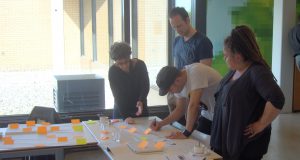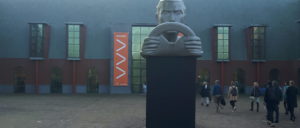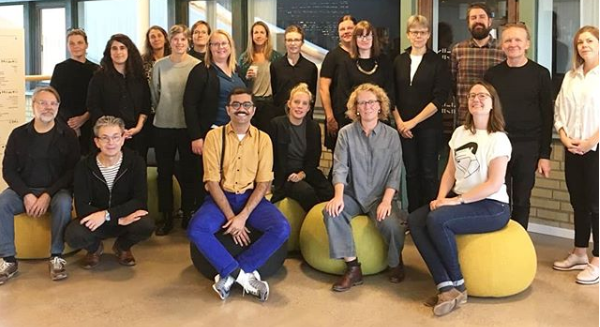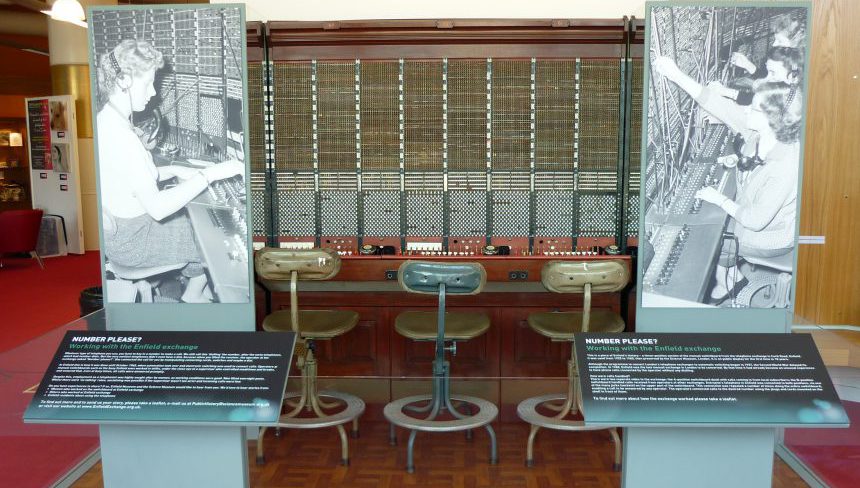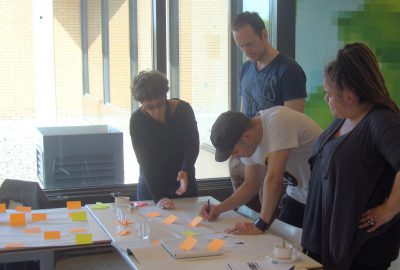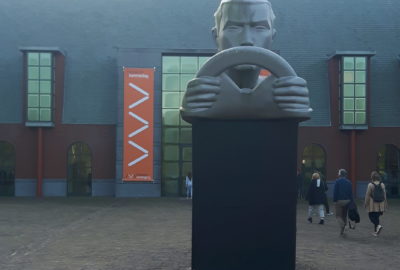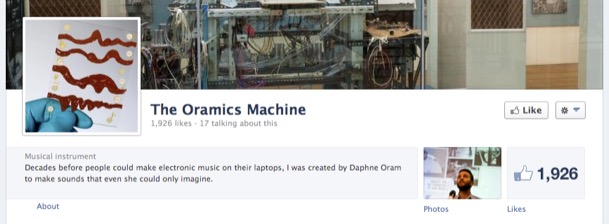Social Media participatie in het museum: Facebook
Op zaterdag 13 april 2013 gaf ik een lezing tijdens de derde PHoSTEM workshop in het Londense Science Museum. Ik presenteerde een project waaraan ik in 2011 en 2012 werkte. Dit project was erop gericht om liefhebbers van de geschiedenis van elektronische muziek bij de ontwikkeling van een tentoonstelling te betrekken. Liefhebbers die niet in de buurt van het museum woonden kregen de kans bij het project betrokken te zijn via een Facebook pagina. Hieronder mijn tekst voor de presentatie. De dia’s voor de presentatie kunnen hieronder of via Slideshare bekeken worden. Deel twee van deze lezing, waarin wordt besproken hoe het museum een online remix wedstrijd op touw zetten, is hier te lezen.
One of the projects I worked on during my time at the Science Museum was a small exhibition about the history of electronic music. This exhibition celebrated the recent acquisition of an early proto-synthesiser called the Oramics Machine, developed by Daphne Oram in the 1960s and 70s, but also looked at the wider history of electronic music in the UK. The exhibition was called ‘Oramics to Electronica: Revealing Histories of Electronic Music.’
During the development of this exhibition we wanted to explore new ways to engage people with the history of electronic music and the exhibition making process. One of the audiences we wanted to work with was that of electronic music enthusiasts. We had several reasons for doing this. Part of the remit of the Research & Public History department that I was part of was to better understand the way various audiences think about the history of Science, Technology, Engineering and Medicine. For the Oramics exhibition we more specifically wanted to know how electronic music enthusiasts viewed the history of the genre and what they judged to be the role of science and technology in this history. Another important reason was that we wanted to open up our exhibition making practice. We wanted to be open to stories that might be different from the ones that we ourselves might choose. We also wanted to give others the opportunity to engage with & contribute to the work that was being done in the museum.
We worked together with many different individuals, groups and organisations during the Oramics project. One of the most visible ways in which we enabled others to contribute was by recruiting a team of 12 electronic music enthusiasts who co-created a large part of the exhibition with us.
Working with ‘the Twelve’ as they came to be known in the museum was a wonderful experience, but we wanted to broaden our reach and give more people the opportunity to engage with the project. We decided to set up a Facebook page and a remix competition with the aim to achieve this. We weren’t sure how popular either would be, but popularity wasn’t a goal. Our goal was to better understand if it was possible to engage people with our work and collections through the use of social media and to find out what worked well and what didn’t work at all.
Rather than creating a Facebook page for the exhibition, we decided to set up a page for the Oramics Machine. It would give us the opportunity to have a slightly more personal and open tone of voice. We could talk in first person, for example and refer to both the past and the exhibition development as something the machine been an active part of. With hindsight, I think there might have been a slightly higher barrier to getting involved with a page called ‘Oramics Machine’ than for a page that would be called ‘Electronic Music Exhibition’ for example. However, I don’t necessarily think this made the project less successful. The title spoke to the people we wanted to reach and who knew enough about the topic to understand what the Oramics Machine was. In a way this helped us develop the community of electronic music enthusiasts we were aiming for.
On Wednesday 10 April the number of likes for the page was 1926. It seems like a lot for such a niche subject and it definitely is a lot more than we expected to get when we started. I still remember getting quite excited when we reached 100 likes.
But as I said, we weren’t after numbers. Facebook can generate detailed statistics about your reach, daily likes, most popular posts etc. and although these statistics can be useful, I believe they say little about whether people engage with your content or not. I had many conversations with my colleague from the Audience Research department, Kayte McSweeney, about how to define online engagement and I still have to find somebody who can give a quantifiable answer to that question. So instead, I suggest I say a few words about how we used our Facebook page and how people responded to it.
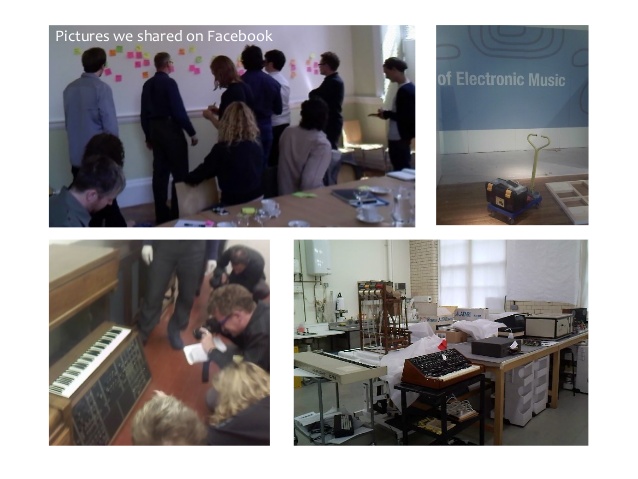
The pictures we shared on Facebook
Opening up
We wanted to open up and be open about the exhibition making process and we tried to do this in a number of ways. We shared pictures of the co-creation workshops and visits to the stores, the work that was done on gallery and of our conservation lab preparing objects for display. Pictures generally work well on Facebook and sharing the process and progress in this way meant we could on the on hand get people excited about the exhibition, but on the other hand be clear and honest about the fact that this wasn’t going to be a terribly big exhibition, without downplaying its importance.
We encouraged ‘the Twelve’ to write blog posts about their co-creation experience. They published these on their own blogs and we linked to them from the Facebook page. This was lovely content for us to share and it meant our participants could grow the readership of their blogs. We learned a lot from reading the blogs ourselves, from the way the participants experienced the workshops we organised for them and the questions they asked themselves, to the fact that our coffee making skills had a lot to be desired. They also were a great way for others who followed us on Facebook to find out more about the exhibition making process we were going through.
We opened up the discussions we had during the co-creation workshop to our Facebook followers. This meant we could acknowledge their expertise and give them a sense of the kind of questions we were dealing with.
We also successfully sourced loan objects for the exhibition through Facebook.
After the exhibition opened we encouraged people to share their pictures and experiences of their visit. Many responses were positive, some less so. We tried to acknowledge all contributions posted on or linking to the Facebook page and we learned that it’s ok to take time to craft an honest and open answer. The feeling that you need to respond as quickly as possible to negative comments posted through social media might get in the way of trying to understand where people are coming from. My experience is that the people who post negative comments actually care a lot about what you’re doing. It’s important to acknowledge that and take time to respond to their concerns. I specifically remember one case where we managed to build up a wonderful relationship with somebody who first seemed to be posting rather negative comments, but who ended up providing an object on loan for the exhibition. He was invited to the opening and contributed to the remix competition, being very supportive of other contestants.

Subjects of blogs written by volunteers
Knowledge sharing
Besides opening up the exhibition making process we also wanted to create a space for knowledge sharing. Over a period of several months three volunteers researched objects that weren’t on display in the exhibition and wrote blog posts about them. One of the volunteers suggested to write a blogpost describing how people could make their own tape loop using an old cassette tape, a pair of scissors and sticky tape. This post, which included sounds of the tape loops he had made himself, proved to be particularly popular. We also shared content from our archives that wouldn’t interest the general Science Museum public, if there is such a thing, but that was like gold dust to these enthusiasts.
And I liked it best when things happened that didn’t come from us. For example, somebody posted a comment that started with an enthusiastic review, but also included a question about some technical details regarding the Oramics Machine. I didn’t quite know how to answer that question, but soon discovered I didn’t have to answer him. The comment received a response from the engineer who built the prototype of the Oramics Machine for Daphne. The two had a wonderful technical conversation that I didn’t understand at all, but it made my day! And I’m pretty sure they were pleased to meet in this way.
We couldn’t have grown this community of enthusiasts without Facebook, but using the services of an external party also means you can’t control the way these services evolve. Since we started the Facebook page the layout of pages has changed. Comments made by others are no longer placed among our own content, but in a separate little box at the top. While preparing this presentation I also noticed that they aren’t saved permanently. I was looking for a particular conversation that was wasn’t started by us and it’s not there anymore. I suppose these changes were made to accommodate companies who want to use Facebook as a more traditional marketing tool and who don’t want negative comments taking centre stage on their page, but it’s really limiting if you value content from others as much as (or more than) the content you’ve created yourself.
So, what have we learned from this experience? Trying to engage people online is a lot of hard work.
But we also learned that it pays of and that red tape is never an excuse to not be open to the enthusiasm and knowledge of people outside your organisation. And I think most importantly, we learnt that although it’s sometimes scary to be in a situation where you can’t control things, it’s a worthwhile place to be in. When you’re open with people about the way you work as an organisation and you are willing to share not just what’s meaningful to you, but also what’s meaningful to them, people will share unexpected and great things with you too. I once read that when you always stay within your comfort zone that comfort zone will get smaller. I think this is true for people, but it’s also true for organisations and I think the Science Museum is growing its comfort zone in a lot of different ways at the moment.
You can find part two of this presentation, focussing on the use of a Remix Competition related to the exhibition, here.

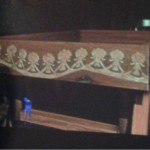 Next Post
Next Post